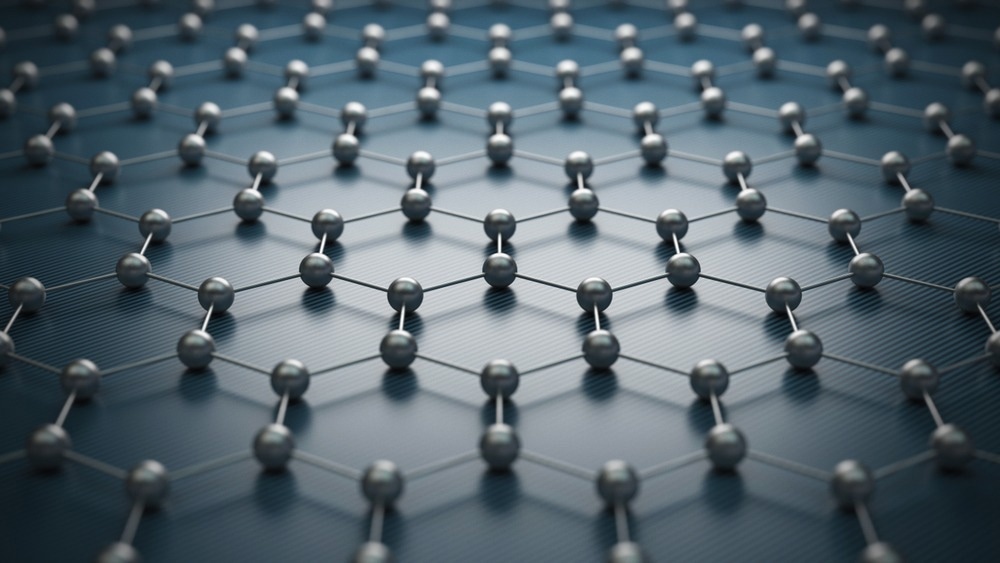A recent study published in Scientific Reports focuses on the thermohydraulic analysis of covalent and noncovalent functionalized graphene nanoplatelets as nanofluids inside a circular tube fitted with twisted tape inserts with 45° and 90° helix angles.

Study: Thermohydraulic analysis of covalent and noncovalent functionalized graphene nanoplatelets in circular tube fitted with turbulators. Image Credit: koya979/Shutterstock.com
Heat exchangers are thermal devices that transfer heat during cooling and heating processes. Nanofluids and turbulence promoters are heat transfer improvement approaches that boost heat transfer efficiencies while decreasing working fluid friction. Twisted tape insertion is one of the most effective means of improving heat transmission in a heat exchanger due to its ease of operation and cheap cost.
Twisted Tape Insertion: Why is it Important for Heat Exchangers?
The efficiency of thermal energy transmission in heat exchanger tubes makes them crucial components of the heat transfer system. The heat exchanger's effectiveness is determined by its capacity to maximize heat transmission.
Scaling and fouling impair the capacity of heat exchanger tubes to transport heat, decreasing total thermohydraulic efficiency. Various tube cleaning methods have been developed to overcome this issue without stopping operations to clean the tubes. The twisted tape insertion system is one such approach.
Twisted tape insertion is a sophisticated heat transfer improvement method that consists of twisted strips, supports, shafts, connecting rings, and seals. The components above are constructed from chemically stable, robust, elastic, and wear-resistant polymeric and metallic materials.
Twisted tape improves heat transmission in heat exchanger tubes by altering the cooling fluid flow route. The twisted tapes' turbulent flow stimulates the fluid particles and causes heat transfer through conduction and convection.
Graphene Nanoplatelets as Nanofluids for Heat Exchangers
Nanofluids have piqued the interest of researchers due to the unusual chemical and physical features of nanometer-sized materials. Many nanofluids possess remarkable thermal conductance, making them appropriate for working fluids in a heat exchanger.
Significant research on using carbon-based nanomaterials such as single-wall carbon nanotubes, multi-wall carbon nanotubes, graphene oxide, and graphene nanoplatelets (GNPs) for producing nanofluids has been published in recent years.
According to relevant studies, graphene nanoplatelets can deliver better thermal performance than other nanofluids. This is because of the excellent thermal conduction, mechanical strength, and electrical conductivity of graphene nanoplatelets.
Graphene nanoplatelets are also considered good candidates for use in nanofluids due to their advantageous thermo-physical characteristics. Moreover, creating graphene nanoplatelets is a simple and inexpensive process.
Main Objectives of The Current Study
Despite extensive research into the use of graphene nanoplatelets as nanofluids in simple heat exchangers, limited attention has been given to the influence of covalent and noncovalent functionalization on hydrodynamic circulation in nanofluids such as graphene nanoplatelets.
The main goal of this research was to examine the thermohydraulic efficiency of bifunctional graphene nanoplatelets as nanofluids inside twisted tape with 45° and 90° helix angles. The thermal and physical characteristics of graphene nanoplatelets were determined at a temperature of 308K.
During the study, three mass proportions (0.025 wt%, 0.05 wt%, and 0.1 wt%) of graphene nanoplatelets were considered. The thermohydraulic performance of graphene nanoplatelets was solved using the shear stress transfer (SST k-omega) turbulence model.
The testing setup consisted of a plain tube with a length of 900mm and a tube hydraulic diameter of 20 mm. Twisted tapes of 20 mm in length, 0.5 mm in thickness, and 30 mm in profile were inserted into the tube. The outside walls of the spiral tubes were heated at a steady surface temperature of 330 K to investigate the heat augmentation capability of graphene nanoplatelets.
Important Findings of the Research
The average outlet temperature was found to be always less than one, indicating that the outlet temperature of noncovalent and covalent graphene nanoplatelets was smaller than that of the base fluid. The outlet temperature of the tubes placed with twisted tapes was higher than the outlet temperature of the simple tube.
The present work evaluated the thermohydraulic performance of graphene nanoplatelets using various metrics such as heat transfer coefficient, temperature difference, average Nusselt number, friction coefficient, and pressure drop. Noncovalent graphene nanoplatelets demonstrated better average heat transfer enhancement as working nanofluids than covalent graphene nanoplatelets.
In conclusion, this study makes a substantial contribution to research on the positive (heat transfer) and negative (frictional pressure drop) features of nanofluids such as graphene nanoplatelets by examining the thermohydraulic efficiency of the real working fluids in such engineering systems.
Reference
Tao, H. et al. (2022). Thermohydraulic analysis of covalent and noncovalent functionalized graphene nanoplatelets in circular tube fitted with turbulators. Scientific Reports. Available at: https://www.nature.com/articles/s41598-022-22315-9
Disclaimer: The views expressed here are those of the author expressed in their private capacity and do not necessarily represent the views of AZoM.com Limited T/A AZoNetwork the owner and operator of this website. This disclaimer forms part of the Terms and conditions of use of this website.